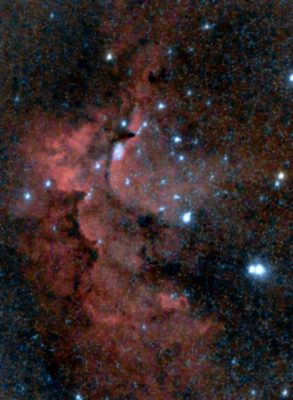Reprinted from the Island Free Press
Although the Orionids meteor shower peaked in October, it is still active until Nov. 7. Expect 20 to 25 meteorites per hour. The shooting stars can appear in any part of the sky but they will seem to originate from the constellation, Orion. Look for the Orionids between midnight and dawn.
Supporter Spotlight
Similarly, the Southern Taurids meteor shower also peaked in October, but there are predictions of high activity on the nights of Nov. 4 and 5. This is a minor shower, but it has a good record of producing fireballs, or very bright meteors. Peak viewing will be around 12:30 a.m.
The Northern Taurids will peak on the night of Nov. 11. Like the Southern Taurids, this is a minor shower that has a reputation for producing fireballs. Peak viewing is around midnight.
Like the Orionids, the shooting stars — and fireballs — from the Taurids can appear anywhere in the night sky, but they will appear to emanate from the constellation Taurus. If you’re a stickler for finding the source of the Taurids, try locating the Pleiades, M45. It’s just about in the center of the constellation.
The Pleiades rise in the east about 6:45 p.m. this week. It’s a tight cluster of stars you can use to check your vision. There are six prominent stars that are readily visible with the unaided eye. Under very dark good conditions, you might be able to spot more.
The Leonids meteor shower will peak just before dawn on the morning of Nov. 17. These shooting stars will appear to originate almost directly overhead from the constellation Leo.
Supporter Spotlight
November began with Venus and Saturn in the southwest at dusk. Mars started the month about 30 degrees above the south-southwest horizon. For those of you with a telescope, Neptune and Uranus will both be in the southeast skies.
Jupiter will be visible in the pre-dawn skies near the eastern horizon.
October Highlights

The second half of October brought clear skies and long, dark nights, which allowed me to focus on my favorite nebula, NGC 7293, the Helix Nebula. Sometimes called “the Eye of God” or the “Eye of Sauron” (for all or you Tolkien fans), the Helix Nebula is fairly close to us; it’s only 900 light years away. The Helix Nebula is very large, but it’s not very easy to see through a telescope.
If the nebula appears to look like a pipe, you’re right. We are looking into the end of a trillion-mile-long tunnel. Imagine getting stuck in that at rush hour.

Another nebula I was able to capture is the Wizard Nebula, NGC 7389. At magnitude +11, the Wizard Nebula is difficult to photograph. It’s a star-forming region that’s about 7,200 light years away. The Wizard Nebula was discovered in 1787 by Caroline Hershel.
At first I had a difficult time seeing the Wizard, but now the image brings up memories from Disney’s Fantasia. In truth, I’m not sure if I’m seeing a wizard or a dancing broom.
Moon Phases
- First Quarter: Nov. 7
- Full moon: Nov. 14
- Last Quarter: Nov. 21
- New moon: Nov. 29
This story is provided courtesy of the Island Free Press, a digital newspaper covering Hatteras and Ocracoke islands. Coastal Review Online is partnering with the Free Press to provide readers with more environmental and lifestyle stories of interest along our coast. You can read other stories about Hatteras and Ocracoke here.







